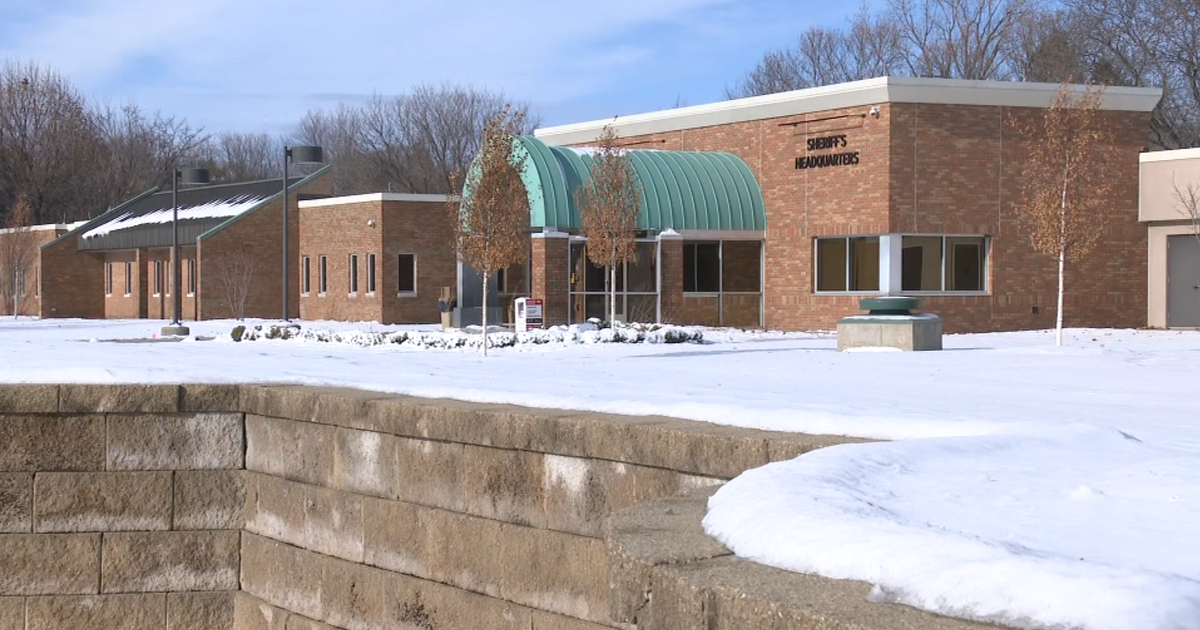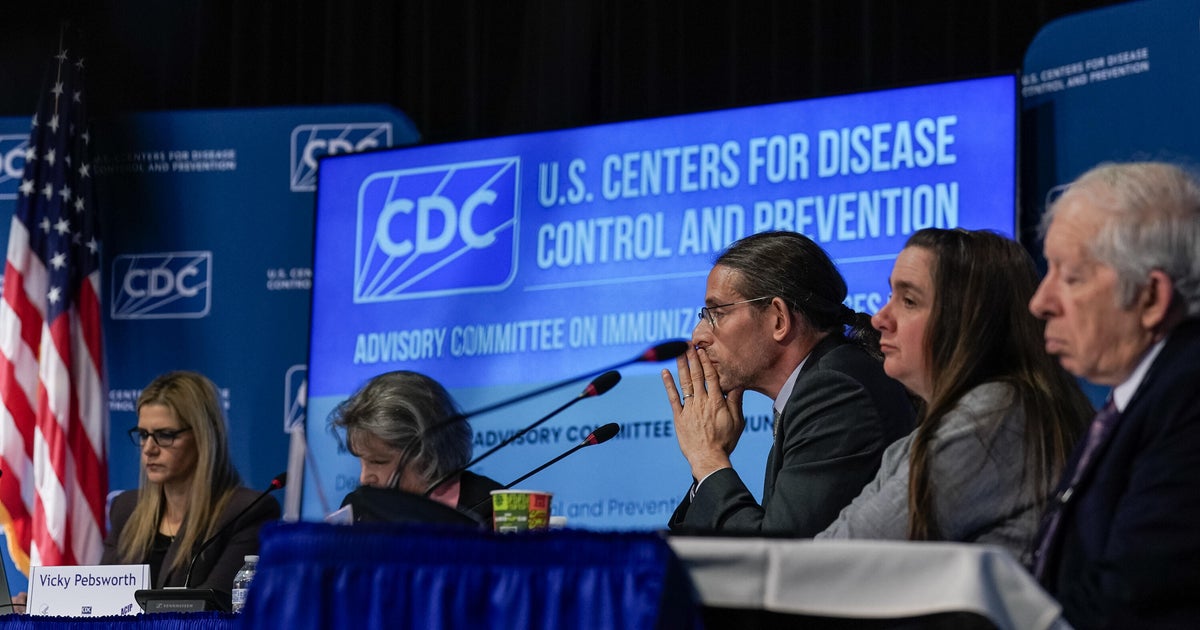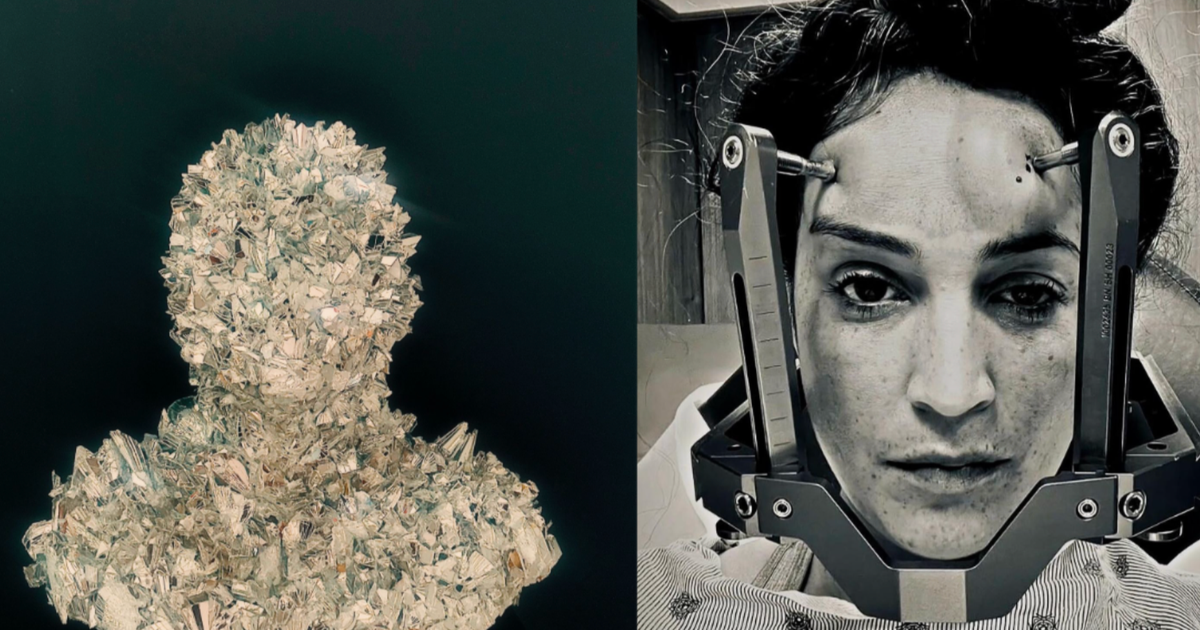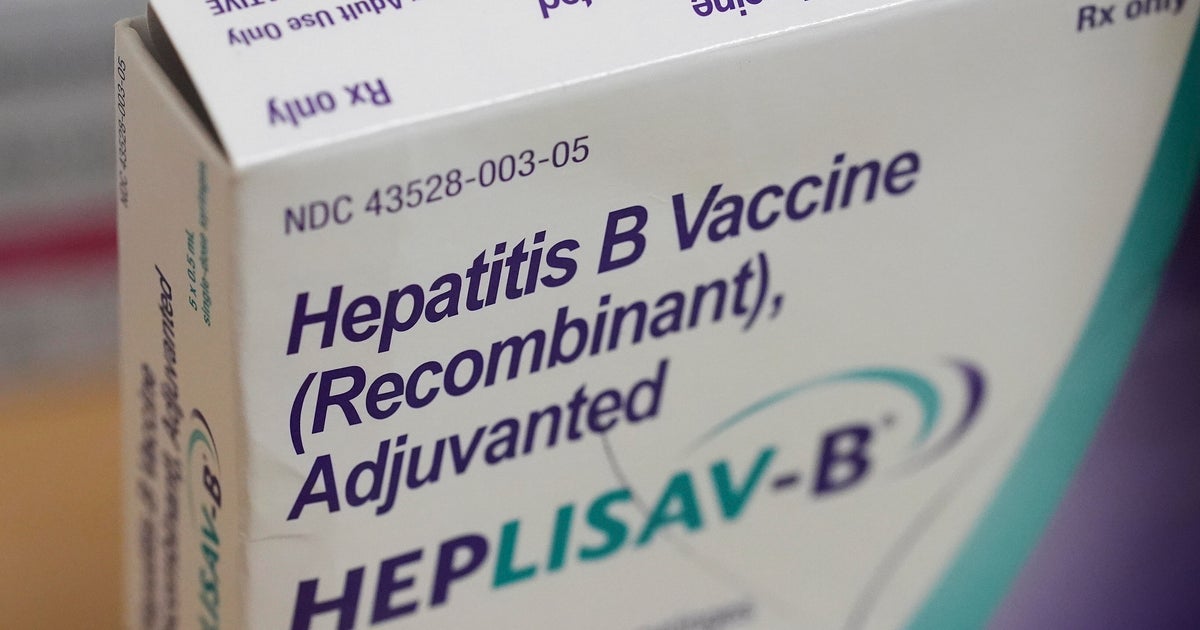Doctor with rare Castleman disease works to find cure
In 2010, Dr. David Fajgenbaum was a third-year medical student at the Perelman School of Medicine at the University of Pennsylvania when suddenly, his health took an unexpected turn. Over the course of a few weeks, he began experiencing symptoms he couldn't place at first — everything from fatigue to night sweats to weight loss. His condition worsened, and he ended up spending more than six months in critical condition at Penn's intensive care unit. It got so bad that he was even given last rites in November 2010.
"It was as frightening a time [as] I've ever had in my life," Fajgenbaum told CBS News.
He was eventually diagnosed with a rare condition: the idiopathic multicentric (iMCD) subtype of Castleman disease (CD), an immune system disorder that is poorly understood by the medical community. Castleman disease — also known as giant lymph node hyperplasia and angiofollicular lymph node hyperplasia — is not a cancer, but impacts the lymph nodes and related tissue and can be life-threatening. Fajgenbaum's is one of three subtypes of the disease.
Fajgenbaum suffered three episodes of relapse and took a year off from medical school during this health crisis. He returned to school, only to suffer another relapse. After this fourth relapse, he went through intense chemotherapy treatment, which put the disease in remission.
He went on to complete his medical studies, graduating in 2013, and also earned his MBA in 2015.
Fast forward six years from his diagnosis, and Fajgenbaum is now leading the charge to raise awareness of the disease and provide resources to others who are affected. In October, it was announced that he would head up the first-ever web-based registry of patient-reported data for further research on the disease. The project is called ACCELERATE, which stands for Accelerating Castleman Care with an Electronic Longitudinal registry, E-Repository, And Treatment Effectiveness research.
ACCELERATE is a partnership between the Castleman Disease Collaborative Network (CDCN), the University of Pennsylvania, and the research arm of Janssen, the drug manufacturer that developed SYLVANT, the first and so far only FDA-approved treatment for multicentric Castleman disease. (Multicentric means that multiple lymph nodes and tissues are affected; another type of the disease, called unicentric, affects a single lymph node and can often be cured with surgery.)
According to the University of Pennsylvania, there are approximately 6,500 to 7,700 new Castleman disease diagnoses each year in the United States. About 35 percent of patients with Fajgenbaum's subtype die within five years of their initial diagnosis. To put that in perspective, that is about the same as the average mortality rate for all kinds of cancer.
Understanding a rare disease
The ACCELERATE registry is part of a larger trend where big data solutions are being applied to health care. For instance, the Jeopardy-winning IBM Watson cognitive computing system has been used to aggregate massive quantities of data to better understand rare diseases. Similarly, this Castleman disease registry could help provide a breakthrough for physicians trying to treat the disease.
"We saw this as an opportunity to, number one, enhance the understanding of the natural history of the disease and also use this data to support a standardized criteria for diagnosing the disease," said Dr. Craig Tendler, Janssen Research and Development's vice president of late-stage development and global medical affairs for oncology, hematology, and supportive care. "The end goal would be to have a source of data to inform treatment decisions, raise the visibility of the disease amongst physicians to see a constellation of symptoms, and look for signs of a possible diagnosis of Castleman Disease."
Of course, a major goal of this project would be to develop more and better treatments. Right now, SYLVANT is approved in 45 countries, but it is only used to treat one form of the disease.
Beyond data points and drug research, the main thrust behind ACCELERATE is a personal one. When Fajgenbaum has an episode, it can be very serious.
Fajgenbaum said that the disease's symptoms were deceptive at first. With his first episode, he experienced flu-like symptoms. Then, his lymph nodes swelled up before he began to experience organ failure. He then experienced bone marrow, liver, and kidney failure. It was during his second episode where he came closest to death.
"My typical case is particularly severe. I'm conscious for such a short amount of time, and it's so scary that the little bit of brain function that I have is me thinking to myself 'I want to get help somehow.' I want to think through things but, of course, I don't have any higher brain function," he said. "It's really really tough. But I've kind of tried to overcome that fear when I'm out of the hospital and in remission. I try to be in as advanced a state of understanding as much as I can."
Now, Fajgenbaum works as an assistant professor of medicine at the Perelman School as well as the associate director of patient impact at the Penn Orphan Disease Center, which focuses on treating rare diseases. Of course, Castleman disease is central to his work. He is the co-founder and executive director of the Castleman Disease Collaborative Network (CDCN), which was founded in 2012 to accelerate research and the development of treatments.
A "surrogate uncle"
The network has been crucial for patients who, like Fajgenbaum, were initially blindsided by a diagnosis for a condition they knew little about.
Mileva Repasky's 5-year-old daughter Katie is one of the youngest people ever diagnosed with Castleman disease. Katie was diagnosed about three and a half years ago, and her mom stressed that it was incredibly disorienting when her initial doctor didn't seem to know much about the disease.
"My husband is in the military and we were diagnosed in Kansas. We went to the doctor and when he walked in with the diagnosis, he said 'Well, I've never really seen much of Castleman disease before and I printed off this information from the internet. If you have any questions after you read it, just let me know,'" Repasky told CBS News.
Having your doctor look up disease information on Google is never reassuring, and Repasky said it was a relief when she and her husband tracked down Fajgenbaum's name while investigating the disease themselves.
They contacted the CDCN and Fajgenbaum sent them more information. Katie has been something of a "guinea pig," her mother said, because most of the treatments used and tests conducted in the past have been centered on adults. Less is known about pediatric cases.
"Katie knows that she has something that makes her different than a lot of the normal kiddos and she knows that she goes to a lot of doctors, but she's very fluent in the kind of medicine that she takes and the routine that we have," Repasky added.
One of the best outcomes from the diagnosis has been Fajgenbaum, himself. Repasky said that the doctor has become a "surrogate uncle" to Katie and the two of them chat on the phone and FaceTime one another.
For Repasky, the director of the Castleman Warrior Program, a national support group, it helps that her daughter has a doctor who is also a patient and can understand exactly what she's going through. While their family is currently in Texas, Repasky said they're looking to move to the Philadelphia-Washington D.C. area so that they "can be by Dr. David."
"I don't want to do this forever"
Like Repasky, Shannon Baker didn't quite know what to think when she heard the term "Castleman disease." Baker, a certified medical assistant, never heard of the disease before and initially thought she had bronchitis or pneumonia. In May 2013, she was admitted to the Bronson Methodist Hospital in Kalamazoo, Michigan, because her body wasn't responding to any antibiotics. After about another month of exhaustive tests, she was finally diagnosed. She said she was so swollen she looked "10 months pregnant."
"I don't want to do this forever, with it being such a rare disease, and I don't want someone to go through the pain and all the hospitalization and treatments that I've gone through," Baker told CBS News. "I want to help spread awareness to other people, to get the Castleman disease name out there in general, so that it can help someone out in the long run."
Like Fajgenbaum, Baker added that it was surreal to go from being a health care provider to a patient.
"I learned about heart failure back in schooling, but to undergo it myself, I was just in denial. I thought, 'I'm too young to have this.' I'm 35 now. I was 31 when I started experiencing the symptoms," she said. "It's been challenging."
Baker, a mom to a young daughter named Quinn, stressed that it's crucial more is uncovered about the disease.
"I'm just scared that I'm not going to be around for my daughter," she said. "I'm on a treatment that — it's honestly working, but I pray that it's going to work. I'm sad that it doesn't work for two-thirds of patients. I feel so blessed that I'm here."
Right now, there are 18 patients enrolled in the ACCELERATE database program.
Eventually, Fajgenbaum said that he hopes there will be a drug that "works for every single patient with Castleman disease, even within subtypes."
"At the heart of this, I'm a patient and also an investigator. With this project, there is a patient perspective to this approach to research," Fajgenbaum explained. "We, as patients — well, no one wants to figure out what is going on with diseases as much as the patients do. We don't always have the tools at our disposal. With this, we are giving patients the tools and the power to be part of changing the course of history. The work that we are doing will change the course of history, the course of understanding Castleman disease so that we can better treat, better diagnose."








